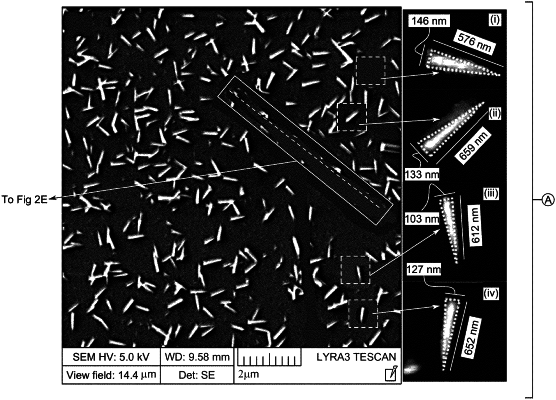| CPC G01N 21/658 (2013.01) [B82Y 30/00 (2013.01); C23C 14/185 (2013.01); C23C 14/5806 (2013.01); G01N 33/5438 (2013.01)] | 9 Claims |

|
1. A method of making a surface-enhanced Raman scattering-active electrode, comprising:
depositing a porous oxide layer onto a solid support to form a first oxide-coated support;
depositing a layer of a noble metal onto the first oxide-coated support to form a second-coated support; and
annealing the second-coated support at 400 to 800° C. to form the surface-enhanced Raman scattering-active electrode,
wherein the surface-enhanced Raman scattering-active electrode, comprises:
the solid support;
the porous oxide layer, wherein the porous oxide layer comprises transition metal oxide nanoparticles present on a surface of the solid support and has a mean pore size of 2 to 30 nm, wherein the transition metal oxide nanoparticles comprise nanoparticles of at least one selected from the group consisting of barium titanate, strontium titanate, lithium niobate and lanthanum calcium manganite; and
at least one of noble metal nanoneedles and noble metal nanorings present on the porous oxide layer;
wherein the noble metal nanoneedles have an average length of 350-800 nm, a flat end with an average width in a range of 100-150 nm, and a pointed end; and
wherein the noble metal nanorings have a thickness of 50-300 nm and are present in the form of annular clusters having elliptical shapes with an average diameter in a range of 35-60 nm.
|